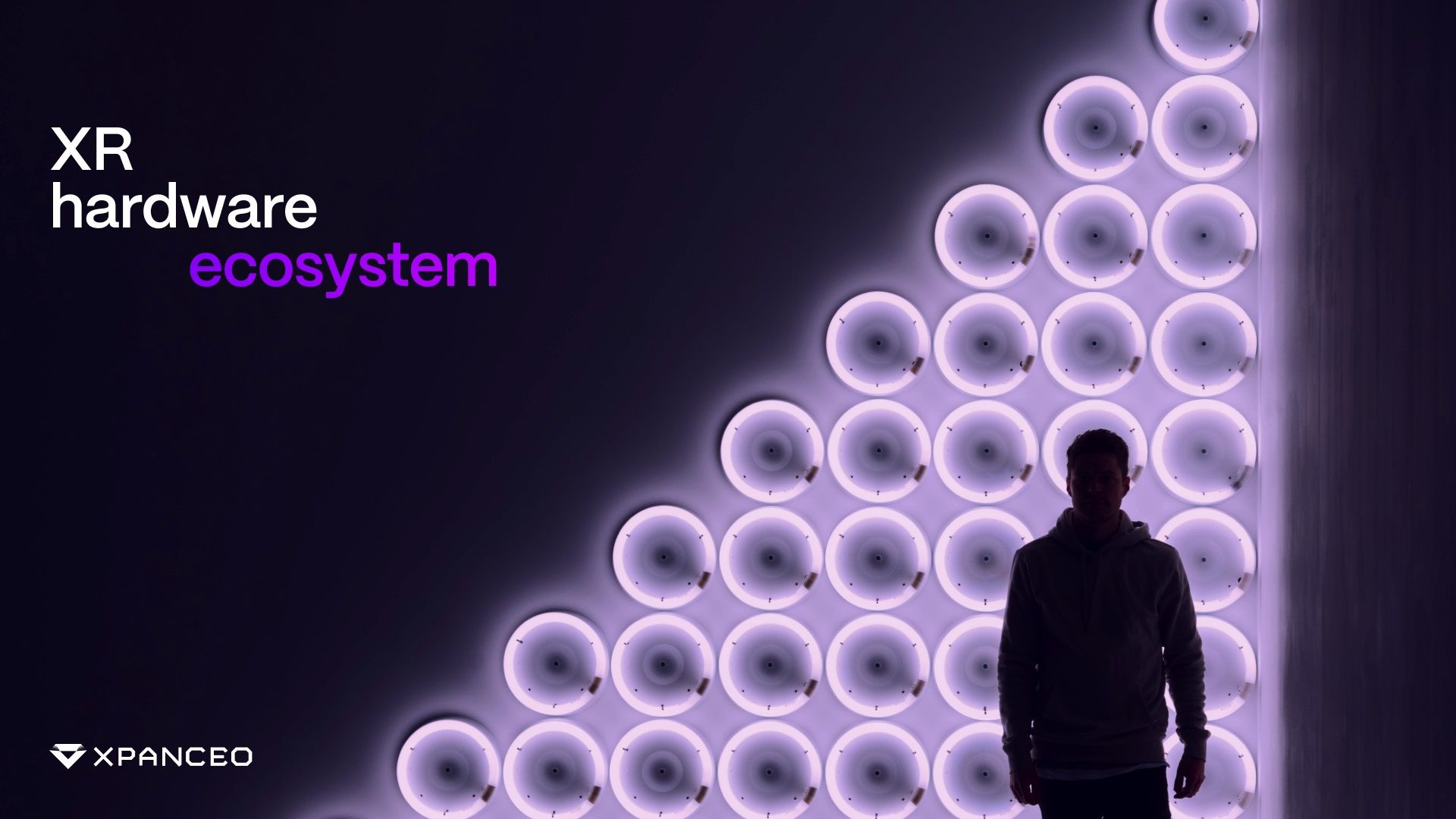XR Hardware Ecosystem
XPANCEO

We have been discussing XR devices as the core of the next generation of personal computing since the inception of XPANCEO as a venture. Now, Apple has reinforced this vision by introducing the term 'spatial computing.' It is time to explore the ecosystem that will grow around this core.
Today, we want to focus on two major classes of new devices that will emerge, or the existing ones that will require radical redesign, to form an ecosystem for XR/spatial computers: spatial awareness devices and image/video capture devices.
- Spatial Awareness
The term 'spatial computing' is particularly relevant here as it helps us understand the nature of the challenge. A laptop or desktop computer is essentially a 'spatially agnostic' device, where its physical position and orientation have minimal to no effect on the functionality of its applications. A phone is slightly more complex, incorporating proximity sensors and an accelerometer, but its spatial awareness is rudimentary. In contrast, XR smart contact lenses (or glasses, or headsets) have a unique relationship with their surroundings. They are physically integrated with their users, and the quality of the user experience depends significantly on their ability to position themselves in the environment, recognize objects and other gadgets, and utilize this spatial awareness.
Addressing this challenge involves two potential solutions. Firstly, the device itself can incorporate camera and sensor arrays combined with AI-powered image recognition to enhance spatial awareness capabilities. Secondly, we can anticipate the emergence of an ecosystem of products designed to work in conjunction with these XR devices. This ecosystem may include:
• NFC/Bluetooth beacons that assist XR devices in understanding their environment, adjusting settings, establishing connections with other appliances, and more. This process should be quicker and simpler than the current Bluetooth handshake, functioning as a layer above the actual device connection, where permissions are granted and ports are opened—a quick mapping of the surroundings.
• NFC/optical tags that enable an XR computer to identify relevant objects. These tags allow the XR computer to place video output, interface elements, and data overlays in the most convenient manner for the user, while also ensuring privacy protection. An XR computer can function without these tags, but they can enhance the user experience in specific contexts such as homes, offices, or shops.
• Taking it a step further, we can envision paints, fibers, and additives used in interior and industrial design to assist XR computers in recognizing objects and surfaces of interest and effectively interacting with them.
- Video and Image Capture Devices
A camera (or camera array) is an essential component of an XR computer. However, the integration between external image/video capture devices and smart contact lenses or AR glasses opens up a realm of captivating opportunities. Two factors come into play in this regard: the more unobtrusive an XR device is, the more 'superpowers' it can provide to the user. Yet, it may have less powerful optics. Consider the following possibilities:
• External cameras offering higher quality or specific properties can connect to the XR computer, which acts as their control unit and viewfinder. With the increasing data transfer rates available today, we can reimagine what constitutes 'a camera.' Remote storage of captured media is becoming viable for higher-tier cameras, and the way we control the capture process can evolve accordingly.
• Another segment of connected external video capture devices includes CCTV cameras, baby monitors, and other XR computers, providing users with a sort of 3rd person view of their surroundings, even enabling them to see through walls.
This list of device classes is not exhaustive, and depending on the pace of innovation in battery design, wireless communication, storage, and encryption, various scenarios of XR ecosystem development can be imagined (e.g., wireless charging over distance, home data centers, etc.). Nonetheless, this offers some food for thought for the industry and anyone curious about the future of computing.
© 2023 XPANCEO. All rights reserved.
